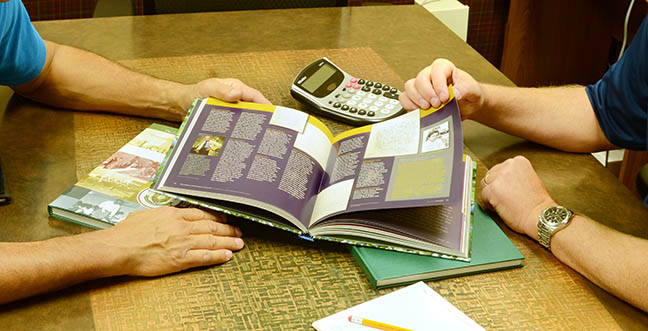When an estimate becomes a job, it’s time to start thinking about how the job is going to finish in the bindery. Planning your project from the tail end first can save many headaches. Many jobs are either reprinted, or have to go through additional bindery operations to fix what could have been compensated for during proper planning.
If the “Layout” needs of finishing are not met, and/or grain direction is not taken into consideration, then how can you be sure the project will finish correctly for the price you have estimated? Once your product is printed, the time to correct for oversights in job planning has passed.
Layouts for a particular job should always be consulted first in the bindery, prior to beginning any prepress work. How a job was estimated versus how it should run can be improved upon in many cases, and skipping this process can cost companies an opportunity to save money.
Saddle Stitcher’s do not all operate with the same requirements, such as laps (lips) for opening the signatures. Not all Perfect Binders have the ability to cut the glue short enough on the spine to not need physical glue catch on the cover. Trim outs for multi-up processing are different based upon the various machines and operations the job will be going through. For reasons such as this layouts should be consulted first in Bindery. There can be compromises between what a press needs and the bindery needs, but it takes initiative to start the dialogue to insure the job gets the proper planning from a “Job Layout” perspective.
Profit Margins are tighter these days for everyone in the industry, but rushing a job into production prior to job planning is a sure bet you’re going to spend more money manufacturing this job than was estimated for. Do your company a favor, whether it’s an in-house bindery or a Trade Bindery, and consult with finishing first. Planning the proper Layouts and accounting for Grain Direction are just as important as how the files were prepared for prepress by your customer.


